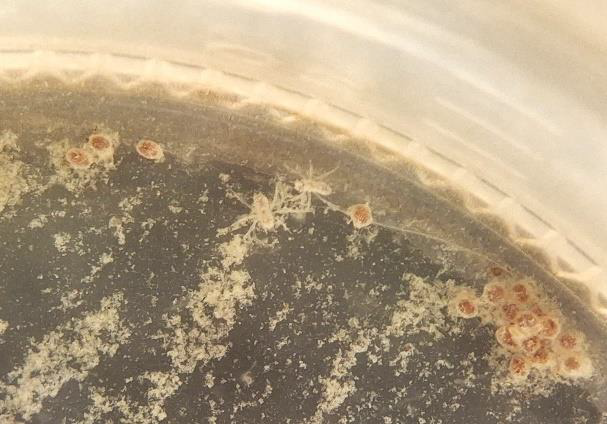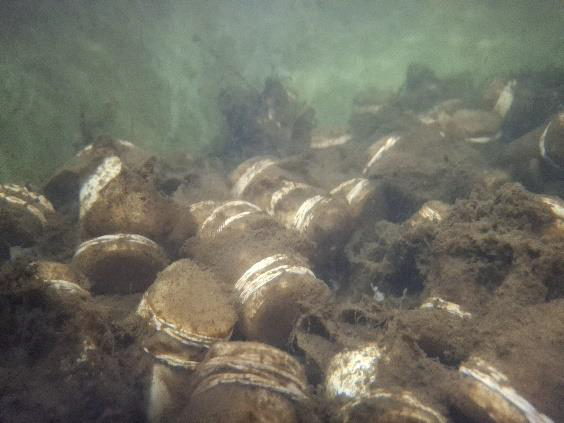Hine’s Emerald Dragonfly eggs were successfully collected last August, and were transferred to Genoa NFH last November. The eggs, from 3 maternal lines, over-wintered in a culture chamber at the hatchery. The chamber was slowly warmed, and eggs began hatching in March. After hatching, larvae were placed into individual culture cups and fed zooplankton filtered out of the hatchery’s ponds.
Spring pond conditions are managed for zooplankton production, which serves as food for young of the year fish that have been produced and stocked into hatchery ponds. This large-scale production also means there are ample rotifers, daphnids, and copepod nauplii present to filter out and feed to dragonfly larvae. Dragonfly larvae are voracious predators right from the start, so the tiny hatchlings are fed zooplankton prey 3 times per week, starting the day or the day after they hatch.
After 4-6 weeks in individual culture cups, larvae are large enough for the next culture stage- mesh screened cages. Larvae were moved into these cages in late May and early June, and are currently in low-flow pond water conditions in the Dragonfly Culture Trailer.
This year’s cohort is the third group Genoa NFH has cultured from an Illinois population while previous year’s cohorts have come from populations in Door County, Wisconsin. This Illinois population, from locations along the Des Plaines River near Chicago, is a more highly threatened population that has retained higher genetic diversity, so we hope focusing on head-starting and hatchery culture efforts of these individuals will help to bolster this critical population. By: Beth Glidewell
Photo: Newly hatched Hine’s Emerald larvae, early spring 2025, a single Hine’s Emerald larvae in a counting tray. Each individual is checked when they are moved from early-stage culture cups to mid-stage screened cages, Larvae in screened cages in a culture tank, with slow flow-through pond water.
By: Beth Glidewell
Photo: Newly hatched Hine’s Emerald larvae, early spring 2025, Larvae in screened cages in a culture tank, with slow flow-through pond water.
Photo credit: USFWS.


